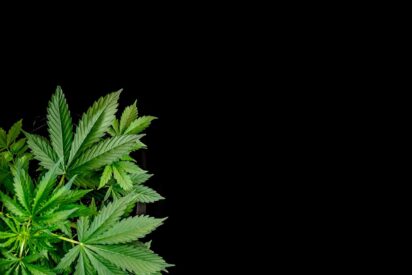
Are You 18 Or Over?
YesOr
No By clicking yes, you certify that you are over 18. By using this website, you agree to our legal disclaimer.605+ Cannabis Strains over 20 Breeders worldwide.
Table of Contents

The cannabis community is gradually growing over time where multiple growers attempt to develop their cannabis plant. Few already has a background in cultivating, but the majority are newbies with no idea on how to nurture a crop, let alone what container should they store it. That is why Space Bucket exists. As the title suggests, it is an indoor technique that will not cost you anything and won’t stress the life out of you. The Space Bucket method works well for beginners who cannot financially support their plants and does not have a spacious backyard or resides in a congested area. On the other hand, you’ll have to expect restrictions upon cultivation since the plant will only live in a small container.
From the sound of it, Space Bucket’s odd quality makes it impossible to serve as a candidate for plants to grow in. But like a typical indoor environment, you will also need to equip it with the proper key elements like lighting, adequate ventilation by applying small-sized fans and a power supply. A standard gallon is the most typical potential Space Bucket, but that should not limit your imaginations to make an improvised and working storage room for your marijuana plants. If you’re a crafty person, expanding your options on what container you should utilize and enhance should be as easy as one two three.
Here lie the most commonly used materials in developing Space Bucket. Please take note that you can alter some of it into something that can work efficiently.
Other tools like electrical tape, wires, glue, and other minor equipment are also needed to make every procedure happen. Upon acquiring the necessary materials, you are to head off to the methods. Few of the processes can subject to change in line with your preferences as long as the alternative fits well.
1.1 To make drainage water paths available, create multiple holes on the bottom of the bucket.
1.2 To attract lights, paint the insides white, or you can buy buckets that already have the same color.
1.3 Attach the reflective light inside. In this case, an aluminum foil is not advisable.
1.4 To be able to control light leaks, pain the outside part black.
2.1 Make two holes on the opposite parts of the bucket, enough for the fans to fit in.
2.2 The bigger ventilator will act as an exhaust fan while the smaller will be inside for an intake process.
3.1 For a broader light placement, you should attach the bulbs on the lid of the bucket in a horizontal way.
3.2 Create holes to insert the bulb socket, and the wires should be parallel to the plug.
3.3 Glue the lids on top of the container for safety purposes.
4.1 Use glue to stick the power strip to any chosen side of the bucket. Make sure the plug from the lights, timer, power supply, and fans can reach it.
To adjust the height of your plant, cut the upper part of each bucket but leave one uncut, and stack them together. Furthermore, make the outside part as black as possible to control the light and for it solely pin its streaks on the plant.
Having your Space Bucket to place your cannabis plants in is similar to having the said plant indoors except the spaces are restricted, but the good thing is everything’s controllable. Due to the limited room, your yields won’t be as heavy as how you like to turn it out to be. The ideal production rate of a marijuana plant goes from 1 to 3 ounces, and the typical height you’ll get in return from a usual Space Bucket is around 2 to 3 feet tall. In regards to the yield, the expected amount is not guaranteed because the abundance of the plant’s production will rely on the lightings.
For exceptional outcomes, expert growers tend to over-do their Space Bucket by maximizing every factor as possible. With that, the yields and built are most likely to double in amount. The indoor technique is ideal for cannabis growers who wish to grow a marijuana plant that can only thrive in a specific temperature condition since they can manipulate everything. But, the same nutrients apply as well with a stabled pH level, proper watering schedule, suitable fertilizers, and other supplements.

In the realm of cannabis culture, the practice of "wake and bake" holds a significant place, accompanied by both supporters and skeptics. As exp

Introducing the robust indica strain known as Critical Mass weed, a harmonious fusion of Afghani and Skunk #1 genetics. Delve into its essence,

Fusarium wilt cannabis represents a significant threat to cannabis cultivation, necessitating a comprehensive understanding of its intricacies.

1980s were a time of profound cultural transformation, marked by iconic fashion, music, and movies. Alongside these trends, a unique facet of '8

[ez-toc] In the deep history of cannabis cultivation, there exists a captivating and creative practice that combines the art of cultivation wit

For growers looking to get better yields and healthier cannabis plants, it's important to understand and control the cannabis soil pH levels. pH

[ez-toc] In indoor gardening, maintaining an optimal temperature within your grow tent is crucial for the health and productivity of your plant

[ez-toc] Welcome to the delightful world of cannafudge crafting, where sweetness meets sophistication, and cannabis infusion adds a unique twis

[ez-toc] You’ve finished trimming your weed, but what about those leftover stems? Don’t throw them away! These seemingly useless bits can a

Feeling high can be an exhilarating experience, but it's essential to make the most of it by engaging in activities that enhance the sensation a

Are You 18 Or Over?
YesOr
No By clicking yes, you certify that you are over 18. By using this website, you agree to our legal disclaimer.